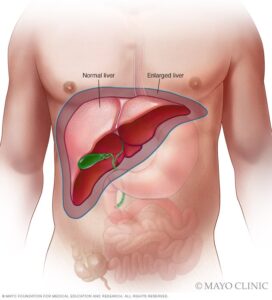
Unlocking DDLT: Insights into Liver Transplantation
The liver, a vital organ nestled in the upper right quadrant of the abdomen, plays a multifaceted role in maintaining our overall health. However, when the liver becomes enlarged, it can signal an underlying health issue that requires attention. Hepatomegaly, the medical term for liver enlargement, manifests through various symptoms, each hinting at potential underlying conditions. Understanding these symptoms is crucial for early detection and intervention. In this article, we delve into the signs and symptoms associated with an enlarged liver, shedding light on its potential causes and implications for overall health.
How is the transplantation done?
Deceased Donor (Cadaveric) Liver Transplantation represents the most prevalent method of liver transplant, sourcing livers from individuals who have passed away suddenly, often due to accidents or brain-related complications. Whether the deceased had previously registered as an organ donor or their family members opt for organ donation, the process initiates with the declaration of brain death. Once this determination is made, the liver is promptly removed, carefully preserved in a sterile fluid. It’s a race against time, as the liver can only be maintained outside the body for a limited window, typically up to 12 hours, necessitating swift action for transplantation.
Waiting List for Liver Transplant
Navigating the landscape of liver transplantation entails being placed on a waiting list, a process fraught with its own set of challenges. Patients must register at designated centers or with organizations like the National Organ and Tissue Transplant Organization (NOTTO) in India for cadaveric organ allocation. The allocation is contingent upon factors such as blood group compatibility and Model for End-Stage Liver Disease (MELD) score, which assesses the severity of the patient’s condition.
Within India, organ allocation operates on a state-based system, prioritizing local recipients. Only when a suitable match cannot be found within the state does the possibility of inter-state transplantation arise. However, international patients face even greater hurdles, positioned at the bottom of the priority list, making access to cadaveric donor livers exceedingly rare.
Being placed on a waiting list for a liver transplant typically involves several steps and considerations. Here’s an overview of the process:
- Referral: The process usually starts with a referral from a hepatologist (liver specialist) or a healthcare provider to a transplant center. This referral is based on the patient’s medical condition and the severity of their liver disease;
- Evaluation: Once referred, the patient undergoes a thorough evaluation at the transplant center. This evaluation includes medical tests, imaging studies, and consultations with various members of the transplant team, such as surgeons, hepatologists, transplant coordinators, social workers, and psychologists. The purpose is to assess the patient’s overall health, determine their suitability for a transplant, and educate them about the procedure and post-transplant care;
- Placement on the Waiting List: If the patient is deemed eligible for a liver transplant after the evaluation, they are placed on the national waiting list maintained by organizations like the United Network for Organ Sharing (UNOS) in the United States. The allocation of organs is based on several factors, including blood type, body size, severity of illness, and waiting time;
- Wait Time: The wait time for a liver transplant can vary significantly depending on factors such as the patient’s medical condition, blood type, and availability of donor organs. Some patients may receive a transplant relatively quickly, while others may wait months or even years;
- Maintaining Health: While waiting for a transplant, it’s essential for patients to maintain their health and follow their healthcare provider’s recommendations. This may involve medications, dietary restrictions, lifestyle changes, and regular medical follow-ups;
- Transplant Surgery: When a suitable donor liver becomes available, the transplant center will contact the patient, and they will undergo the transplant surgery. The surgery itself typically lasts several hours, and the patient will then be closely monitored in the hospital during the recovery period;
- Post-Transplant Care: After the transplant, patients require lifelong medical care and monitoring to prevent complications, monitor organ function, and ensure overall health and well-being. This includes taking immunosuppressive medications to prevent organ rejection and attending regular follow-up appointments with their transplant team.
It’s important to note that the process and specific details may vary depending on the transplant center and the patient’s individual circumstances. Additionally, advancements in medical technology and transplant techniques continue to improve outcomes and reduce wait times for patients in need of liver transplants.
Recovery Time
Post-transplant recovery follows a trajectory akin to Living Donor Liver Transplant (LDLT), albeit with its own unique considerations. While some recipients may experience expedited recovery owing to the full-size implantation of the liver, in contrast to LDLT where only a portion is transplanted, the overall post-operative care regimen remains largely consistent. Regular follow-ups and meticulous monitoring are imperative for ensuring the success and longevity of the transplant.
Conclusion
In the intricate tapestry of organ transplantation, Deceased Donor Liver Transplantation emerges as a vital lifeline for patients devoid of living donors. It emptbodies not just a medical procedure but a profound testament to human generosity and the enduring spirit of altruism. However, amidst the promise it holds, challenges persist, from the logistics of organ allocation to the imperative of timely transplantation. As medical science advances and societal attitudes toward organ donation evolve, the landscape of DDLT continues to evolve, offering renewed hope and resilience to those in dire need.

